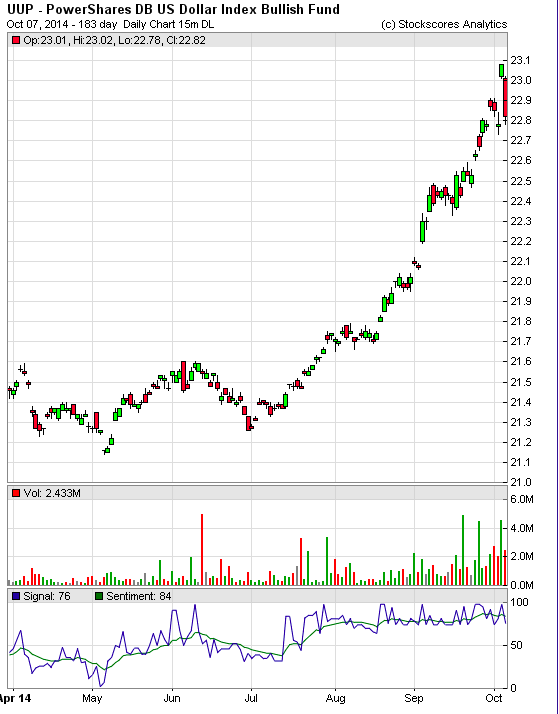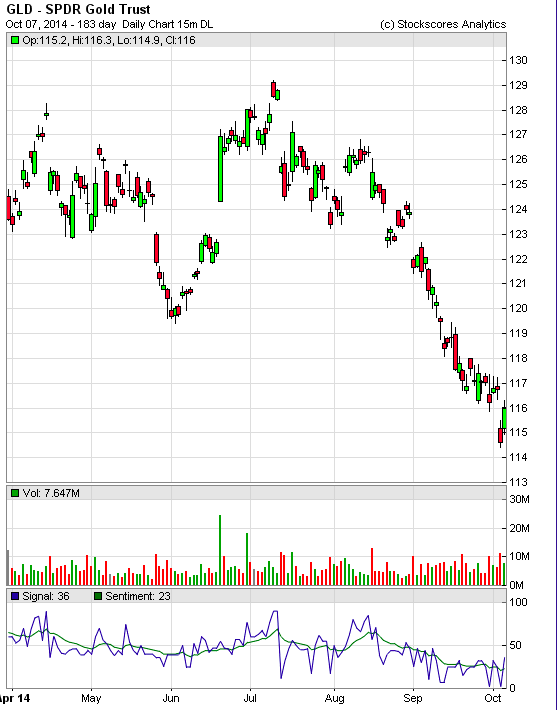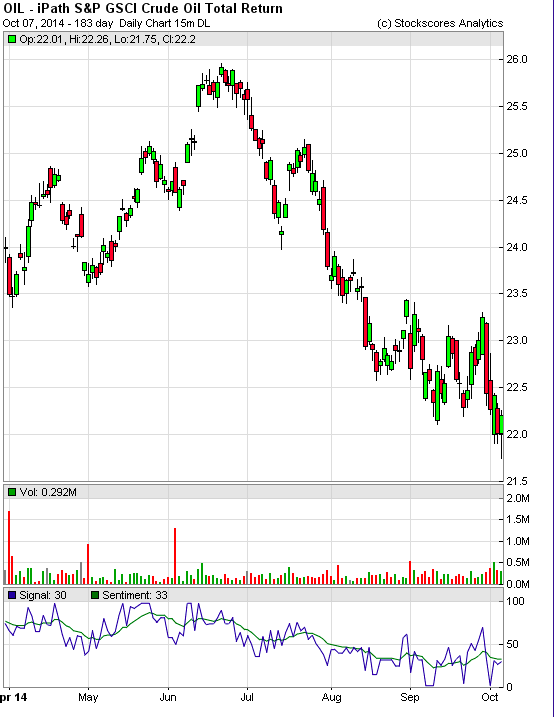

Time to Be Selective
In this week’s issue:
- Weekly Commentary
- Strategy of the Week
- Stocks That Meet The Featured Strategy
In This Week’s Issue:
- Stockscores’ Market Minutes Video – Trend Reversals
- Stock Features of the Week – Gold, Oil and The US Dollar
- Stockscores Trader Training – Time to Be Selective
Trader Training – Be Selective
This is the time of year when it is really necessary to be selective with the trades you take. We are at the seasonal end of the weak season for trading, the market tends to improve sometime in October or November.
Before that happens, the market also tends to be its most volatile and difficult. We often get sharp corrections at this time of year so it is essential to be very fussy about the trades you take. We are likely within a few weeks of an improvement in the market, so be patient.
It’s better to miss a good trade than to take a bad one. Missing a good trade doesn’t deplete your capital-it only fails to add to it. A bad trade will not only reduce the size of your trading account, it will eat up emotional capital and your confidence.
A losing trade is not a bad trade. Bad trades are simply taking the trade that doesn’t meet your requirements. Bad trades come from working hard to see something that’s not there, guided by your need to trade rather than the market offering a good opportunity.
I have read very few books about the stock market, but one that I’ve read more than once and that I think is a must-read for every investor is Reminiscences of a Stock Operator by Edwin Lefevre. Here is a wonderful quote from that book that captures the essence of what this chapter is about:
What beat me was not having brains enough to stick to my own game-that is, to play the market only when I was satisfied that precedents favored my play. There is the plain fool, who does the wrong thing at all times everywhere, but there is also the Wall Street fool, who thinks he must trade all the time. No man can have adequate reasons for buying or selling stocks daily-or sufficient knowledge to make his play an intelligent play.
-Reminiscences of a Stock Operator
I advise all my students that they will make more money by trading less, at least so long as trading less is the result of having a high standard for what they trade. If you tell yourself you’re limited to only making 20 trades a year, you’re probably going to be very fussy about what trades you take. With less than two trades to be made each month, only the very best opportunities will pass your analysis. All of the “maybes” or “pretty goods” will get thrown out.
We take the pretty good trades because we’re afraid of missing out. It’s painful to watch a stock you considered buying but passed on go up. You remember this pain and the next time you see something that looks pretty good, you take it with little regard for the expected value of trading pretty good opportunities.
Pretty good means the trade will make money some of the time and lose some of the time, and the average over a large number of trades may be close to breaking even. The fact that one pretty good trade did well is reasonable and expected. In the context of expected value, taking those pretty good trades many times will lead to less than stellar results when the losers offset the winners.
You shouldn’t judge your trading success one trade at a time. You must look at your results over a large number of trades. To maximize overall profitability requires you to have a high standard for what trades you make. Maintaining that standard will be easier if you take the trades that stand out as an ideal fit to your strategy, not by taking those that are marginal and require a lot of hard work to uncover.
This week’s Market Minutes video is about trend reversals. There is a very steep upward trend in the US Dollar which is causing most commodities to be in very steep downward trends. Eventually these oversold trends will reverse but trying to catch the bottom is like trying to catch a falling knife.
Here are the charts of Gold, Oil and the US Dollar.
To catch the trend reversal, watch for the following three things:
1. Break of the trend line
2. Formation of a rising bottom (or a falling top on the US Dollar)
3. Break from a rising bottom
Until that happens, avoid these sectors. The US Dollar fell sharply today, as it is hitting long term resistance, so we may be very close to a reversal so watch these charts closely.
1. UUP

2. GLD

3. OIL

The New Stockscores Trader Education Center
Stockscores will be launching a new online trader education center in the next two weeks. Those who would like a guided tour should register for the upcoming webinar:
Wednesday Oct 15 6:00pm PT, 9:00pm ET
Click here to register
The Toronto Money Show
Join Tyler Bollhorn and a star-studded cast of financial experts at The World MoneyShow Toronto (Metro Toronto Convention Center) this October 16-18. Tyler will be speaking on Saturday Oct 18th at 12:45 – 1:30 on How to Find and Trade Hot Stocks.
Attendance is free but you must register. For more information, and to register, click here
Stockscores Market Minutes Video – Trend Reversals
What are the important signs of a trend reversal? This week, Tyler shows how both up and down trends tend to reverse and what to watch for. Plus, his regular weekly market analysis.
Click here to watch on Youtube
References
- Get the Stockscore on any of over 20,000 North American stocks.
- Background on the theories used by Stockscores.
- Strategies that can help you find new opportunities.
- Scan the market using extensive filter criteria.
- Build a portfolio of stocks and view a slide show of their charts.
- See which sectors are leading the market, and their components.
Disclaimer
This is not an investment advisory, and should not be used to make investment decisions. Information in Stockscores Perspectives is often opinionated and should be considered for information purposes only. No stock exchange anywhere has approved or disapproved of the information contained herein. There is no express or implied solicitation to buy or sell securities. The writers and editors of Perspectives may have positions in the stocks discussed above and may trade in the stocks mentioned. Don’t consider buying or selling any stock without conducting your own due diligenc












